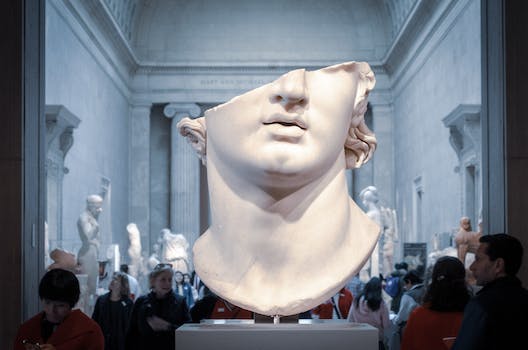-
Table of Contents
- The History of the Borscht Belt: How It Became a Beloved Retreat for Jewish Americans
- Exploring the Cultural Impact of the Borscht Belt on Jewish American Identity
- The Rise and Fall of the Borscht Belt: How It Changed Over Time
- The Legacy of the Borscht Belt: How It Continues to Influence Jewish American Culture Today
- Q&A
“Experience the timeless charm of The Borscht Belt: A treasured getaway for Jewish Americans of all ages.”
The Borscht Belt, also known as the Jewish Alps, was a beloved retreat for Jewish Americans across generations. Located in the Catskill Mountains of New York, the Borscht Belt was a popular vacation destination for Jewish families from the 1920s to the 1980s. It was a place where Jewish Americans could escape the hustle and bustle of city life and enjoy the fresh mountain air, the natural beauty of the Catskills, and the vibrant culture of the Borscht Belt. The Borscht Belt was home to many famous resorts, such as Grossinger’s, the Concord, and the Nevele, which offered a variety of activities and entertainment for visitors. From swimming pools and golf courses to comedy shows and cabaret performances, the Borscht Belt was a place where Jewish Americans could relax, have fun, and create lasting memories.
The History of the Borscht Belt: How It Became a Beloved Retreat for Jewish Americans
The Borscht Belt, also known as the Jewish Alps, was once a beloved retreat for Jewish Americans. It was a place where Jewish families could escape the hustle and bustle of city life and enjoy the beauty of the Catskill Mountains.
The Borscht Belt began in the late 19th century when Jewish immigrants from Eastern Europe began to settle in the Catskill Mountains. These immigrants were looking for a place to escape the anti-Semitism they faced in the cities. They found the Catskills to be a peaceful and welcoming place, and soon the area became known as the Borscht Belt.
The Borscht Belt was a popular destination for Jewish Americans in the early 20th century. It was a place where they could relax and enjoy the outdoors. The area was home to many resorts, which offered activities such as swimming, tennis, and golf. The resorts also provided entertainment, such as vaudeville shows and comedians.
The Borscht Belt was a popular destination for Jewish Americans until the 1960s. At this time, the area began to decline as more people moved to the suburbs and the resorts began to close. However, the Borscht Belt still holds a special place in the hearts of many Jewish Americans.
The Borscht Belt is a reminder of a time when Jewish Americans could escape the discrimination they faced in the cities and enjoy the beauty of the Catskill Mountains. It is a reminder of a time when Jewish Americans could come together and enjoy the outdoors. The Borscht Belt is a beloved retreat for Jewish Americans, and it will always be remembered fondly.
Exploring the Cultural Impact of the Borscht Belt on Jewish American Identity
The Borscht Belt, also known as the Jewish Alps, was a popular vacation destination for Jewish Americans in the mid-20th century. Located in the Catskill Mountains of New York, the Borscht Belt was home to dozens of resorts that provided a unique cultural experience for Jewish Americans. From the 1950s to the 1970s, the Borscht Belt was a place where Jewish Americans could escape the hustle and bustle of city life and enjoy a more relaxed atmosphere.
The Borscht Belt was a place where Jewish Americans could express their culture and identity in a safe and welcoming environment. The resorts provided a variety of activities, such as swimming, tennis, and golf, as well as entertainment in the form of comedy shows, musical performances, and theatrical productions. These activities allowed Jewish Americans to explore their culture and identity in a way that was not possible in the cities.
The Borscht Belt also had a significant impact on Jewish American identity. The resorts provided a place for Jewish Americans to come together and celebrate their culture and identity. The resorts were a place where Jewish Americans could express their culture and identity without fear of discrimination or prejudice. This allowed Jewish Americans to explore their culture and identity in a safe and welcoming environment.
The Borscht Belt also had a significant impact on the development of Jewish American culture. The resorts provided a place for Jewish Americans to come together and share their culture and identity. This allowed Jewish Americans to explore their culture and identity in a way that was not possible in the cities. The resorts also provided a platform for Jewish American artists and entertainers to showcase their talents. This allowed Jewish American culture to flourish and develop in a way that was not possible in the cities.
The Borscht Belt had a significant impact on Jewish American identity and culture. The resorts provided a safe and welcoming environment for Jewish Americans to explore their culture and identity. The resorts also provided a platform for Jewish American artists and entertainers to showcase their talents. This allowed Jewish American culture to flourish and develop in a way that was not possible in the cities. The Borscht Belt was a place where Jewish Americans could express their culture and identity in a safe and welcoming environment.
The Rise and Fall of the Borscht Belt: How It Changed Over Time
The Borscht Belt, also known as the Jewish Alps, was once a thriving vacation destination for Jewish Americans in the Catskill Mountains of New York. From the 1920s to the 1960s, the Borscht Belt was a place of entertainment, relaxation, and culture. It was a place where Jewish Americans could escape the hustle and bustle of the city and enjoy the beauty of the mountains.
The Borscht Belt was a popular destination for Jewish Americans because of its many resorts. These resorts offered a variety of activities, such as swimming, tennis, golf, and horseback riding. The resorts also had entertainment, such as comedians, singers, and dancers. Many of the resorts had their own theaters, where guests could watch movies and shows.
The Borscht Belt was also known for its food. The resorts served traditional Jewish dishes, such as borscht, kugel, and latkes. The resorts also had their own bakeries, where guests could buy freshly baked breads and pastries.
The Borscht Belt was a popular destination for many years, but its popularity began to decline in the 1960s. This was due to a number of factors, including the rise of air travel, the increasing popularity of other vacation destinations, and the changing tastes of Jewish Americans.
The resorts began to close one by one, and by the 1980s, the Borscht Belt was all but forgotten. Today, many of the resorts have been demolished or converted into other uses. However, some of the resorts still remain, and they are now popular destinations for tourists who want to experience the history of the Borscht Belt.
The Borscht Belt may have changed over time, but it still holds a special place in the hearts of many Jewish Americans. It was a place of relaxation, entertainment, and culture, and it will always be remembered as a unique part of Jewish American history.
The Legacy of the Borscht Belt: How It Continues to Influence Jewish American Culture Today
The Borscht Belt, also known as the Jewish Alps, was a popular vacation destination for Jewish Americans in the mid-20th century. Located in the Catskill Mountains of New York, the Borscht Belt was home to dozens of resorts that offered a variety of activities, from swimming and tennis to comedy shows and cabaret performances. For many Jewish Americans, the Borscht Belt was a place to escape the hustle and bustle of city life and enjoy a more relaxed atmosphere.
Today, the Borscht Belt is no longer a popular vacation destination, but its legacy continues to influence Jewish American culture. Many of the comedians and entertainers who got their start in the Borscht Belt went on to become household names, including Mel Brooks, Jerry Seinfeld, and Joan Rivers. These performers helped to shape the comedic style of Jewish American humor, which is characterized by self-deprecating jokes and witty one-liners.
The Borscht Belt also had a major influence on the development of Yiddish theater. Many of the plays and musicals that were performed in the Borscht Belt resorts were written in Yiddish, and they often featured themes of Jewish identity and culture. These plays helped to popularize Yiddish theater and paved the way for its continued success in the 21st century.
The Borscht Belt also had a major impact on the development of Jewish cuisine. Many of the dishes that were served in the resorts, such as matzo ball soup and kugel, are now staples of Jewish American cuisine. These dishes are often served at family gatherings and special occasions, and they are a reminder of the Borscht Belt’s lasting influence on Jewish American culture.
The legacy of the Borscht Belt continues to be felt in Jewish American culture today. From the comedic style of Jewish American humor to the popularity of Yiddish theater and Jewish cuisine, the Borscht Belt has left an indelible mark on Jewish American culture. Its influence can still be seen in the 21st century, and it is a reminder of the importance of preserving Jewish culture and traditions.
Q&A
1. What is the Borscht Belt?
The Borscht Belt was a popular vacation destination for Jewish Americans in the Catskill Mountains of New York during the mid-20th century. It was known for its many resorts, which offered a variety of activities, including swimming, golf, tennis, and entertainment.
2. What made the Borscht Belt so popular?
The Borscht Belt was popular because it was a place where Jewish Americans could go to relax and enjoy themselves without worrying about anti-Semitism. It was also a place where Jewish culture and traditions could be celebrated. The resorts offered a variety of activities and entertainment, making it a great place for families to spend time together.
3. What happened to the Borscht Belt?
The Borscht Belt began to decline in popularity in the 1970s and 1980s as more people began to vacation in other parts of the world. Many of the resorts closed down, and the area became less popular.
4. How has the Borscht Belt been remembered?
The Borscht Belt has been remembered fondly by many Jewish Americans who grew up visiting the area. It has been the subject of books, films, and television shows, and is still remembered as a beloved retreat for Jewish Americans across generations.The Borscht Belt was a beloved retreat for Jewish Americans across generations. It provided a safe haven for Jewish Americans to escape the pressures of everyday life and enjoy the company of their peers. The Borscht Belt was a place of joy, laughter, and relaxation, and it will always be remembered fondly by those who experienced it. Although the Borscht Belt is no longer in operation, its legacy lives on in the memories of those who experienced it.
![]()











